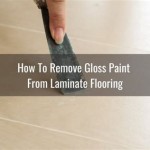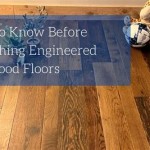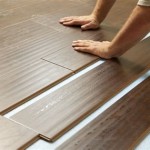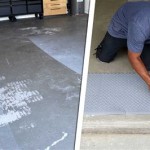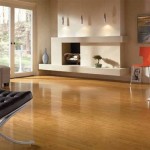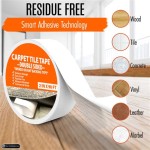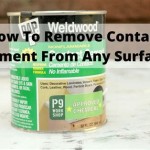Can You Paint Over Engineered Wood Floors To Look Like Hardwood?
Engineered wood floors offer a durable and visually appealing alternative to solid hardwood flooring. They are less susceptible to warping and expansion due to humidity changes, making them a popular choice for various settings. However, the pre-finished surface of engineered wood floors may not always match your desired aesthetic. If you're looking to transform the look of your engineered wood floors to resemble traditional hardwood, painting presents a viable option. But before embarking on this project, it's essential to understand the intricacies and considerations involved.
Understanding Engineered Wood Floors
Engineered wood floors consist of multiple layers, with a thin veneer of real wood on top. This veneer provides the visual appeal and texture associated with hardwood. The underlying layers, typically made of plywood or other engineered wood materials, offer structural stability and strength. This layered structure makes engineered wood floors less susceptible to warping and expansion compared to solid hardwood.
While the veneer layer can accept paint, it’s important to note that the wood grain patterns and texture might not be as pronounced as on solid hardwood. The paint will essentially create a new surface, hiding the natural beauty of the wood grain to some extent.
Preparing Engineered Floors for Painting
Before you grab your paintbrushes, meticulous preparation is crucial for achieving a smooth and long-lasting finish. Improper preparation can lead to uneven paint coverage, peeling, and premature wear. Here’s a step-by-step guide to preparing your engineered wood floors for painting:
- Clean the Floors: Thoroughly clean the floors to remove dirt, dust, grime, and any existing finishes. Use a cleaner specifically designed for wood floors, following the manufacturer's instructions.
- Sand the Floors: Sanding is essential to create a smooth surface for the paint to adhere to. Start with a coarse-grit sandpaper (80-grit) to remove any bumps, scratches, or imperfections. Gradually work your way up to finer-grit sandpaper (120-grit or higher) to create a smooth finish.
- Prime the Floors: Applying a primer is crucial for a smooth and durable finish. Choose a primer specifically formulated for wood floors. The primer will help the paint adhere better, providing a more even finish.
It’s important to note that sanding should be done with caution, as excessive sanding can damage the veneer layer. If you’re unsure about sanding, it’s wise to consult with a professional flooring contractor.
Choosing the Right Paint
The selection of paint plays a vital role in achieving a successful paint job on engineered wood floors. Here are some essential considerations:
- Type of Paint: Choose a paint specifically designed for wood floors. These paints are typically formulated for high durability and resistance to foot traffic and wear.
- Finish: Consider the desired finish for your floors. For a traditional hardwood look, a semi-gloss or satin finish may be suitable. These finishes offer a subtle sheen and enhance the depth of the paint color.
- Color: When choosing a paint color, think about the overall style of your home and the existing décor. Consider consulting with a professional color consultant for guidance on the best color options.
Tips for Painting Engineered Wood Floors
Once your floors are properly prepared, you can proceed with the painting process. Here are some tips for achieving a smooth and even finish:
- Use a Quality Paintbrush: Choose a high-quality paintbrush designed for painting wood floors. A brush with angled bristles will help you apply paint evenly and smoothly.
- Thin the Paint: Depending on the paint type, you may need to thin it slightly with water or a paint thinner to ensure smooth application. Consult the manufacturer's instructions for specific guidance.
- Apply Thin Coats: Apply thin coats of paint, allowing each coat to dry completely before applying the next. This will prevent drips and ensure consistent coverage.
- Apply with Consistent Strokes: Be sure to use consistent strokes when applying the paint. Avoid going over the same area multiple times, as this can lead to uneven coverage and paint buildup.
- Clean Up: Once the paint is dry, clean up any spills or drips promptly. Use a damp cloth to wipe away any excess paint.
Painting engineered wood floors can be a rewarding DIY project, but it requires careful attention to detail. Adequate preparation and the proper materials will ensure a successful and durable finish. If you’re not comfortable with the process, consider hiring a professional flooring contractor to handle the job.

Can You Paint Engineered Wood Harbor Exports

How To Paint Wood Floors Without Sanding The Heathered Nest

Painting Engineered Hardwood Floors Tips For Success From The Forest Llc

Can You Paint Laminate Flooring How To Guide Leader Floors Blog

How To Change The Color Of Your Engineered Hardwood Floor From Forest Llc

Diy Project Trip To Home Chalk Painting Floors

Can You Paint Engineered Wood Floors V4 Flooring

Refinishing Old Wood Flooring Your Step By Guide To A New Look

Can Engineered Wood Flooring Be Refinished Step Into Style The Ultimate Guide To

Diy How To Paint Wood Floors Like A Pro Shabbyfufu Com
See Also
